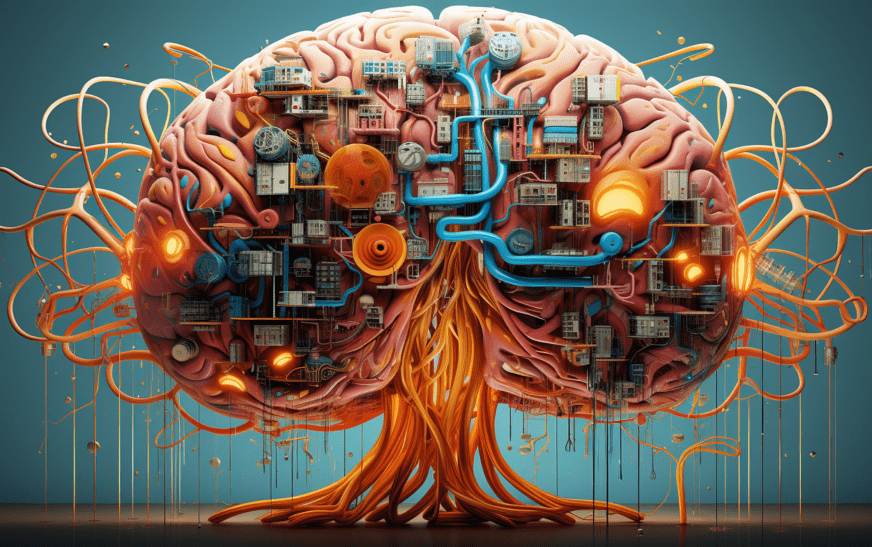Imagine walking through your favorite park and suddenly seeing digital creatures frolicking around you, or aiming your phone at a wall and watching it transform into a vibrant art installation. This is the magic of augmented reality (AR), where the digital world seamlessly blends with our physical surroundings. As technology evolves, AR continues to capture our imagination, opening up new possibilities for interaction and engagement in ways we never thought possible. From gaming to education, its potential knows no bounds. Let’s dive deeper into this fascinating realm where pixels meet reality!
Understanding Augmented Reality
Augmented reality is an innovative technology that overlays digital content onto the real-world environment. Unlike virtual reality, which creates a completely immersive experience, AR enhances our perception of reality by adding layers of information and interactive elements.
This interaction happens through devices like smartphones, tablets, or specialized glasses. Users can see both the physical world and digital enhancements simultaneously. It’s like having a superpower that allows you to visualize data and graphics right before your eyes.
AR harnesses various technologies such as computer vision, simultaneous localization and mapping (SLAM), and depth tracking. These components work together to create an engaging experience where users can interact with 3D models or animations in their immediate surroundings.
With its ability to blend digital assets into everyday life, augmented reality paves the way for new experiences across numerous domains—from entertainment to education—and captivates users around the globe.
History and Evolution of AR

The roots of augmented reality trace back to the 1960s. Ivan Sutherland created the first head-mounted display, known as “The Sword of Damocles.” It laid the groundwork for future AR technologies.
Fast forward to the 1990s, when researchers began developing more interactive experiences. The term “augmented reality” gained traction during this period. Companies explored its potential in gaming and military applications.
In the early 2000s, mobile devices revolutionized AR’s accessibility. With GPS and camera integration, ordinary smartphones could overlay digital information onto real-world scenes.
By 2016, Pokémon Go brought augmented reality into mainstream consciousness. Millions experienced a blend of physical exploration with virtual creatures appearing on their screens.
Today’s advancements in AI and computer vision continue to push AR boundaries further than ever imagined. From retail to education, its evolution is transforming how we interact with our surroundings.
How Does AR Work?

Augmented Reality (AR) bridges the gap between the digital and physical worlds. It overlays virtual elements onto real-life environments, creating an interactive experience.
The technology typically uses a device’s camera to capture its surroundings. This visual data is then processed through AR software, which identifies surfaces and objects in real-time.
Once analyzed, digital images or information are rendered on top of what you see. Users can interact with these virtual components as if they exist in the physical space alongside them.
Sensors play a crucial role too. They track movements and adjust the perspective of digital content accordingly. This ensures that whatever appears on-screen aligns perfectly with your view.
With advancements in computer vision and machine learning, AR applications have become increasingly sophisticated. The seamless integration of graphics into our daily lives continues to enhance user experiences across various platforms.
Types of Augmented Reality

Augmented Reality (AR) comes in various forms, each tailored to specific needs and experiences. Marker-based AR uses physical triggers, like QR codes or images, to overlay digital content. When scanned, these markers bring virtual elements to life.
Markerless AR is more versatile. It relies on location data and sensors instead of predefined markers. This type enhances navigation apps by placing information directly onto real-world environments.
Projection-based AR involves projecting digital images onto surfaces in real-time. This method creates interactive visuals that can engage users without the need for screens.
Superimposition-based AR overlays new information on an existing view. Medical professionals often use this technique during surgeries for enhanced precision by visualizing internal structures.
Each type has its unique benefits and applications, making augmented reality a powerful tool across diverse sectors like gaming, education, and healthcare.
Applications of AR in Different Industries
Augmented reality is making waves across various sectors, transforming how businesses operate. In retail, customers can visualize products in their homes before purchasing, enhancing the shopping experience.
In healthcare, AR assists surgeons by overlaying critical information during procedures. This technology improves precision and reduces risks associated with complex operations.
Education also benefits significantly from AR applications. Students can interact with 3D models of historical artifacts or biological structures, fostering a deeper understanding of subjects.
The real estate industry leverages AR for virtual tours. Prospective buyers explore properties without needing to step foot inside them.
Even tourism sees an upgrade through augmented reality apps that provide immersive experiences at historical sites or museums. By blending digital elements into the physical world, these industries are redefining engagement and efficiency like never before.
Advantages and Disadvantages of Using AR
Augmented Reality offers exciting benefits that can transform how we interact with our environment. It enhances user experience by overlaying digital information onto the real world, making tasks more intuitive. For instance, in retail, customers can visualize products in their homes before buying.
However, there are notable drawbacks to consider. The technology can be expensive to implement and maintain, limiting access for smaller businesses or startups. Privacy concerns also arise as AR often requires data collection from users.
Moreover, reliance on this technology may lead to decreased face-to-face interactions. People could become overly absorbed in their digital experiences, missing out on genuine connections around them.
There’s also the challenge of ensuring a seamless integration between digital overlays and the physical world. Poorly executed AR experiences can frustrate users instead of delighting them. Balancing innovation with practicality remains essential as AR continues to develop.
The Future of Augmented Reality
The future of augmented reality (AR) is brimming with potential. As technology advances, we can expect more seamless integration between digital content and our physical surroundings.
Imagine walking through a city while receiving real-time information about historical landmarks, restaurants, or art installations—a personalized guide right before your eyes. This could redefine how we experience travel and exploration.
Education stands to benefit immensely as well. Interactive lessons could allow students to visualize complex concepts like anatomy or physics in their own space. Learning becomes active rather than passive.
Healthcare is another sector ripe for transformation. Surgeons might use AR overlays during operations, increasing precision and enhancing patient outcomes.
As devices become lighter and more accessible, everyday tasks will evolve too. From shopping experiences that let you try on clothes virtually to interior design apps showcasing furniture in your home—AR will reshape interactions everywhere we go.
Conclusion
Augmented reality (AR) is transforming the way we interact with our surroundings. It merges digital elements seamlessly into our physical world, creating experiences that are both immersive and informative. As technology continues to evolve, so will the capabilities of AR, making it an integral part of daily life.
From its historical roots to modern applications across various industries like gaming, healthcare, and education, AR showcases remarkable versatility. Its advantages include enhanced engagement and improved learning outcomes. However, challenges such as privacy concerns and technological limitations also exist.
The future of augmented reality holds vast potential as advancements in hardware and software open new avenues for innovation. Whether it’s through smart glasses or mobile apps, the fusion of digital content with real-world environments promises exciting developments ahead.
With a growing focus on user experience and accessibility, AR has the power to reshape how we perceive information in our everyday lives. This blend of digital sophistication with tangible realities invites users to explore uncharted territories where imagination meets practicality.











